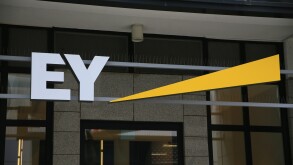As mentioned in the previous article, a SAFE deposit can enjoy tax certainty in Israel under the guidelines of a “green path”, when the following criteria are met:
Aiming for high tech and innovation
The investment must be in an Israel resident, privately-held innovative company. A company qualifies as ‘innovative’ when most of its expenses are R&D related or for the manufacturing/marketing of its products. During at least three reporting years preceding the signature on the SAFE the audited financial reports must feature the required R&D expenses. A company younger than three years must simply show the same from its inception. The R&D activities of the target entity continue unaltered after the signing of the SAFE.
SAFE holder not a creditor
Wording in documentation such as ‘loan’, ‘debt’, or similar, is a complete no-no, as are liens or pledges on any assets of the investee. Guarantees provided by the company (or a related party) pertaining to the SAFE also immediately result in disqualification as an ‘equity’ contribution. Of course, any entitlement of the investor to a ‘repayment’ of any part of the amount invested, whether in cash or in-kind, before the date of the SAFE share placement, will result in denial of tax neutrality of the particular SAFE.
The possibility to transfer entitlements and obligations under the SAFE to a third-party is subject to approval by the company. An exception is made for a transfer to a permitted transferee defined explicitly already in the agreement. Only in case of:
Voluntary or involuntary dissolution of the company;
The appointment of a receiver; or
A special administrator by either the Official Receiver, a court or the Law Enforcement and Collection Systems Authorities.
The investor may be repaid the capital that would have been paid in by him had the shares actually been issued. In any case, the SAFE may not award the investor a right to repayment of its principal investment amount.
The company’s commitments to the SAFE holder ought to be subordinate to commitments to all its creditors. Only in the event of a dissolution of the investee, the rights of a SAFE holder may have priority over those of ‘ordinary’ shareholders.
The company may not claim deduction of finance expenses in any fashion relating to the SAFE: not by recording finance expenses, not by capitalisation of financing costs, not by revaluation of an obligation or by way of creating some covert expense.
Pricing and value
The issuing price of future shares is calculated based on the estimated value of the company in the most recent funding round, and without giving any further specific discount on that number. Any increase in the issuance of the safe shares must be part of a funding round raising at least 25% from non-SAFE holders.
Issuance of the shares (‘conversion’)
The predetermined events for conversion of the SAFE into shares are:
The next funding round;
An initial public offering;
An exit in which the majority of shareholders sell their shares (not including shares under option rights); and
A transaction in which the company sells all (or most) of its assets.
Minimum holding period
To substantiate the ‘equity-like risk’ taken by SAFE investors justifying the (discounted) future shares price, a “minimum holding period” from the date of the SAFE signing is twelve months, and another nine months from the date of share allocation.
The minimum holding period is disregarded when an accelerated conversion or the sale of SAFE shares are triggered by a coerced sale. This is the case, inter alia, when the majority of shareholders sell and the consideration for the sale is paid by an unrelated buyer (or a co-shareholder owning less than 25% of the share capital).
The price that a SAFE investor is entitled to receive when eventually selling his shares (or a sale of his SAFE rights) must be equal to the price per share other investors receive holding the same type of shares.
SAFE sailing?
The final test lies in a withholding tax audit of the company. Although the guidance - and any later Circular for that matter - binds the tax authorities, and when the company and its SAFE investors walked the straight and narrow “green path”, a tax official may argue differently in an audit. Even when the company has been fully compliant to the guidelines, it will still have to deal with the positions of the tax official. Based on experience, it is safe to say that a company might feel forced to compromise on the payment of some tax which it can no longer demand back from the (once) SAFE holders. And in that case, the tax charge will come at the expense of the company’s equity raised for the advancement of its R&D and its intangible; such an outcome would be opposite to the wise intention under which the guidance was conceived.
In any case, the temporary guidance now published about SAFEs will protect simple agreements for future capital entered into until the end of 2024, or until publication of a dedicated Circular or other authoritative guidance.
Careful drafting of SAFE documentation can save superfluous negotiations with the Israel tax authorities and prevent loss of precious invested monies on tax compromises. As to existing SAFE arrangements, foreign investors and investees can now hold their SAFE against the detailed explanations in the guidance and amend misunderstandings that may have slipped in, even if only by a clarifying addendum to the agreement.











